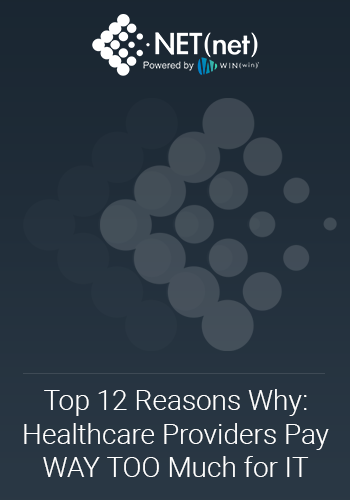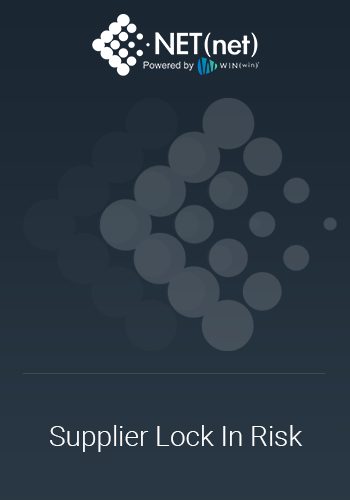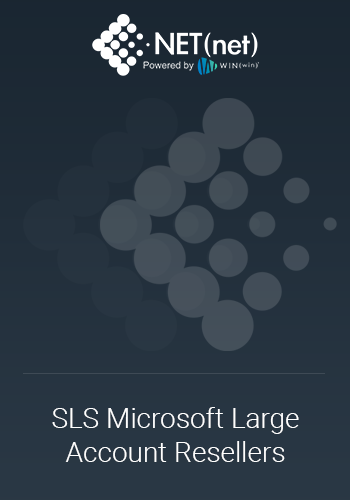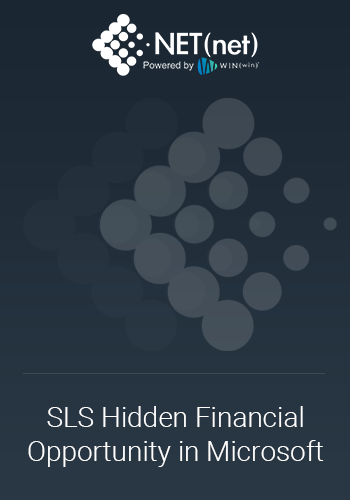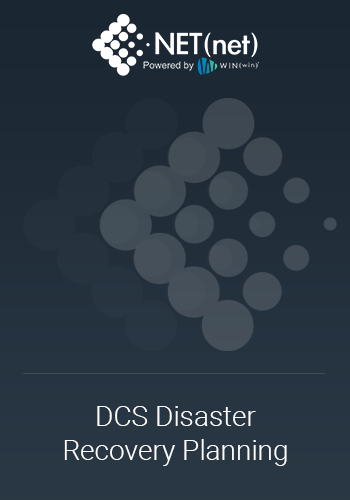Preface
When it comes to casting aspersions, technology suppliers face their fair share of scorn from client organizations who have been burned by past transgressions. It’s not uncommon for them to demonstrate contempt for the likes of IBM, Oracle, SAP, Microsoft, Salesforce, and others... but few garner the wrath deservedly bestowed on Bloomberg. Time and again, these organizations seek ways to dethrone the financial software giant, best known for its iconic ‘Terminal’, yet Bloomberg continues to cling to a strategy of tyrannical account control wherever they can, as they continue to ride the mysticism of an iconic social status symbol in the financial services industry that persists to this day.
Background
We have been providing counsel to those suffering under Bloomberg’s tyranny for years. Look back at a couple of earlier blogs about Bloomberg for more context:
- Top 5 Reasons Why the Bloomberg Empire Will Fall
- Can the White-Walker Ghouls At Bloomberg Be Stopped?
Introduction
There are a few reasons why client organizations recoil at the very mention of the name Bloomberg:
- Exceedingly High Costs. The Bloomberg Terminal is a very expensive piece of software. It costs $24,240 per year - per user. This can be a major expense for businesses, especially small businesses.
- It's a Luxury. Most client organizations do not need the full functionality of the Bloomberg Terminal. Some businesses may only need a few of the features, such as the news and data feeds. For these companies, the cost of the Bloomberg Terminal vastly exceeds the actual value derived from it.
- It’s a Dinosaur. The Bloomberg Terminal looks old, outdated, and like a ‘green screen’ from the TV Show Land of the Lost. Bloomberg has not made a significant innovative change to the Terminal since inception in 1982, and instead, relies wholeheartedly on its market dominance to maintain its leadership position.
- It’s Difficult. Like listening to its eponymous founder speak, it is difficult to use this complex piece of software and can take users a long time to learn how to use it effectively. This can keep costs artificially high for a prolonged period of time for most client organizations.
- Aggressive Sales Tactics. Clients often cite Bloomberg’s elitism and use of aggressive sales tactics to sell their products and services as a chief complaint. This can be frustrating for client organizations, and it can make it difficult to get a fair deal.
- Bureaucratic Culture. Bloomberg is known for being extremely difficult to work with, and client organizations have a general belief that much of this is by design to make it difficult for customers to extract an appropriate amount of value from their subscriptions by getting the service and support they need when they need it.
- There are Alternatives. Despite Bloomberg’s ardent belief that a customer would be crazy not to standardize on the Bloomberg Terminal, there are other extremely viable financial information providers that offer products and services materially similar to the Bloomberg Terminal. These providers are often easier to work with and offer solutions that are frequently significantly less expensive and frequently easier to use.
Overall, the cost, complexity, and attitude of Bloomberg contributes to the negative sentiment directed towards them from most client organizations.
Market & Competitive Analysis
Beyond brand recognition, Bloomberg has a significant advantage over the competition in its data coverage (viewed by industry insiders as unmatched by competitors). This has certainly helped Bloomberg maintain its considerable market share advantage, despite criticism that it has not made significant changes to its platform in recent years.
Even with these considerable advantages, Bloomberg continues to face criticism that the platform is outdated and that it is not keeping up with the demands of the financial industry. Others argue that Bloomberg is too expensive and that its competitors offer better value.
.png?width=4771&height=3521&name=Pie%20Chart%2006-2023%20(1).png)
Here are some interesting customer reviews:
- "The Bloomberg Terminal is a bloated, overpriced piece of software that is more of a hindrance than a help. It is slow, clunky, and difficult to use. The customer service is also terrible. I would not recommend the Bloomberg Terminal to anyone." [Source: Glassdoor]
- "The Bloomberg Terminal is a waste of money. It is not user-friendly, and it is not worth the price. I would not recommend it to anyone." [Source: Capterra]
- "The Bloomberg Terminal is a dinosaur. It is outdated and it is not worth the price. There are better alternatives available." [Source: Trustpilot]
- "The Bloomberg Terminal is a nightmare to use. It is so complex and confusing that it is impossible to learn how to use it without a lot of time and effort. The customer service is also terrible. They are not helpful, and they do not seem to care about their customers." [Source: Quora]
- "The Bloomberg Terminal is a rip-off. It is so expensive that it is only worth it for a very small number of people. The vast majority of people would be better off using a free or low-cost alternative." [Source: Reddit]
These are just a few of the reviews, and while it is important to note that not everyone has a negative experience with the Bloomberg Terminal, these reviews are reflective of our empirical experiences and consistent with the overwhelming view of most of the client organizations we work with.
Here is a little more information on Bloomberg’s Top 5 competitors:
- LSEG’s Refinitiv Eikon: Refinitiv Eikon is a financial information and analytics platform that provides access to a wide range of news, data, analytics, and research. Refinitiv Eikon is a popular alternative to Bloomberg because it is more affordable, and it offers a wider range of features.
- FactSet: FactSet is a financial information and analytics company that provides a wide range of products and services to investors, traders, and other financial professionals. FactSet's products and services include news, data, analytics, and research.
- CapitalIQ: S&P Global Market Intelligence is a financial information and analytics company that provides a wide range of products and services to investors, traders, and other financial professionals. S&P Global Market Intelligence's CapitalIQ platform includes news, data, analytics, and research.
- Morningstar: Morningstar is a financial research company that provides ratings, research, and data to investors, traders, and other financial professionals. Morningstar's products and services include ratings, research reports, and data.
- Teradata Vantage: A cloud-based data analytics platform that provides real-time market data, news, and analytics to financial professionals.
Some believe that Bloomberg has the ‘only’ live data feed to the market, and that is simply not true. All of Bloomberg’s competitors also have access to real-time market data. Here is a handy feature analysis chart:
%20(1).png?width=798&height=359&name=Table%2006-2023%20(1)%20(1).png)
These are just a few of the many competitive alternative suppliers to Bloomberg. When choosing a financial information platform, it is important to consider your specific needs and requirements.
Here are some factors to consider when choosing a financial information platform:
- Cost: The cost can vary depending on the features and services offered.
- Features: The features and services offered can vary depending on the supplier.
- Data: The quality and depth of the data offered can vary depending on the supplier.
- Ease of use: The ease of use can vary depending on the supplier.
- Support: The level of support offered can vary depending on the supplier.
It is important to compare the different financial information platforms available to find the one or ones that best meets your use case needs.
Top 5 Ways to Save Money on Bloomberg
Most client organizations are clamoring for savings in 2023. IT remains the #1 cost harvest area of most modern enterprises, and in the financial services industry, Bloomberg costs remain among the highest spend areas. In addition, most client organizations have exhausted their conventional cost savings countermeasures, leaving them to consider how best to save money. With that, here are the Top 5 Ways to Save Money on Bloomberg.
1. Unbundle your Bloomberg Subscription. Bloomberg offers a variety of products and services, but not all of them are necessary for every user. By unbundling your subscription, you can save money by only paying for the products and services that you actually use.Here are the top 3 examples of where unbundling a Bloomberg subscription can lead to significant savings opportunities:
- Unbundling by department. If you have multiple departments that use Bloomberg, you can unbundle your subscription by department. This will allow you to only pay for the products and services that are used by each department.
Pro Tip: if your sales department uses Bloomberg for research and your trading department uses Bloomberg for execution, you can unbundle your subscription so that only the sales department pays for the research products and only the trading department pays for the execution products.
- Unbundling by user. If you have multiple users who use Bloomberg, you can unbundle your subscription by user. This will allow you to only pay for the products and services that are used by each user.
Pro Tip: if some of your users only need access to Bloomberg's news and research products and other users only need access to Bloomberg's trading products, you can unbundle your subscription so that only the users who need access to news and research products pay for those products and only the users who need access to trading products pay for those products.
- Unbundling by time period. If you only need access to Bloomberg for certain periods of time, you can unbundle your subscription by time period. This will allow you to only pay for the time that you actually use Bloomberg.
Pro Tip: if you only need access to Bloomberg during the trading day, you can unbundle your subscription so that you only pay for Bloomberg during the trading day.
By unbundling your Bloomberg subscription, you can save money by only paying for the products and services that you actually use. This can be a significant savings opportunity, especially for large enterprises with multiple departments and users.
Here are some additional Pro Tips for unbundling your Bloomberg subscription:
- Review your usage. Before you unbundle your subscription, it is important to review your usage to determine which products and services you actually use. This will help you to make informed decisions about which products and services to keep and which products and services to remove from your subscription.
- Compare prices. When you are unbundling your subscription, it is important to compare prices to ensure that you are getting the best possible deal. You can compare prices by contacting Bloomberg directly or by using a third-party comparison tool.
- Take a close look at Chat. User estimates over a large client sampling suggest that 20% of Bloomberg terminal users only ever use the chat feature “Instant Bloomberg”. Instant Bloomberg allows users to communicate with each other in real time, which can be helpful for collaborating on projects, sharing information, and getting quick answers to questions. At $10/user/month for a chat subscription, this is an area (if unbundled), that could generate significant savings.
- Be prepared to negotiate. If you are not satisfied with the price that Bloomberg is offering, you may be able to negotiate a lower price. Be prepared to justify your request and be prepared to walk away if Bloomberg is not willing to negotiate.
Here are some of the third-party suppliers that offer Bloomberg emulation services:
- Thomson Reuters Eikon: Thomson Reuters offers a Bloomberg emulation service called Eikon. Eikon provides access to a wide range of financial data, news, and analytics, including data from Bloomberg.
- Cost: Eikon starts at $1,500 per user per month.
- Savings: Eikon can help you save money on Bloomberg by providing access to a similar set of features and data at a lower cost.
- FactSet: FactSet offers a Bloomberg emulation service called FactSet Workspace. FactSet Workspace provides access to a wide range of financial data, news, and analytics, including data from Bloomberg.
- Cost: FactSet Workspace starts at $1,000 per user per month.
- Savings: FactSet Workspace can help you save money on Bloomberg by providing access to a similar set of features and data at a lower cost.
- QuikStrike: QuikStrike offers a Bloomberg emulation service called QuikStrike. QuikStrike provides access to a wide range of financial data, news, and analytics, including data from Bloomberg.
- Cost: QuikStrike starts at $500 per user per month.
- Savings: QuikStrike can help you save money on Bloomberg by providing access to a similar set of features and data at a lower cost.
Here are some of the benefits of using a third-party supplier instead of Bloomberg:
- Lower cost: As mentioned above, third-party suppliers typically offer lower prices than Bloomberg.
- More flexibility: Third-party suppliers typically offer more flexibility in terms of features and data. For example, you may be able to choose which data providers you want to use, and you may be able to add or remove features as needed.
- Better customer service: Third-party suppliers typically offer better customer service than Bloomberg. You may be able to get help from a live person if you have any problems, and you may be able to get faster responses to your questions.
Overall, using a third-party supplier instead of Bloomberg can be a great way to save money and get more flexibility and better customer service.
3. Buy in Bunches of 6+. Instead of adding new Bloomberg subscriptions per user when they are needed, try to bundle your purchases in groups of 6 or more, as there are volume discounts available to you that offer savings for higher quantities.See Chart Below:
%20(1).png?width=4583&height=1375&name=Table%2006-2023%20(2)%20(1).png)
Please note that these prices are for the basic Bloomberg solution. There are also additional add-on features that can be purchased, such as Bloomberg Professional Services (BPS) and Bloomberg Enterprise Data (BED).
- BPS is a suite of tools that allows users to collaborate, trade, and manage portfolios.
- BED is a suite of data that provides users with access to news, market data, research, and analytics.
- The cost of BPS and BED varies depending on the features and data that are purchased.
At the single terminal cost of $2020/month, it’s a 3-year total cost of $72,720, and the basic data service alone would make up $43,200 of that amount, meaning that the Bloomberg terminal is valued at about $29,520 in that scenario. That’s a hefty price tag for a Wintel PC, a keyboard, a mouse, an internet connection, and a couple of display screens that you could otherwise build on your own for around $2,000.
4. Monitoring your Bloomberg usage. Bloomberg offers several tools that can help you track your usage. By monitoring usage, you can identify areas where you can reduce your spending.Here are 3 of the best examples of how monitoring Bloomberg usage can help enterprises save money:
- Identifying underutilized features. By monitoring your usage, you can identify features that are not being used by your employees. These features may be costing you money, but they are not providing any value to your business. You can then remove these features from your subscription to save money.
- Identifying excessive usage. By monitoring your usage, you can identify employees who are using the Bloomberg terminal excessively. These employees may be spending too much time on the terminal, which is costing your business money. You can then implement policies to limit their usage or provide them with training on how to use the terminal more efficiently.
- Identifying trends in usage. By monitoring your usage over time, you can identify trends in how your employees are using the Bloomberg terminal. This information can help you make informed decisions about your subscription, such as whether to upgrade or downgrade your plan.
By monitoring your Bloomberg usage, you can identify areas where you can reduce your spending. This can save you money and help you get the most out of your Bloomberg subscription.
Pro Tips:
- Use the Bloomberg Usage Report. The Bloomberg Usage Report provides a detailed breakdown of your usage by feature, employee, and time period. This report can help you identify areas where you can reduce your spending.
- Set up alerts. You can set up alerts to notify you when your usage exceeds a certain threshold. This can help you identify excessive usage and take steps to reduce it.
- Review your usage regularly. It is important to review your usage on a regular basis to ensure that you are not overspending. You can use the Bloomberg Usage Report or other tools to track your usage.
5. Negotiate with Bloomberg. If you're not happy with your current Bloomberg subscription, engage NET(net) to help you negotiate a better deal with Bloomberg. Bloomberg is often willing to negotiate discounts, especially if you're a large enterprise.
- Bloomberg is boastful in claiming that they ‘do not negotiate pricing’. However, there are many customers that have been able to negotiate discounts. Large enterprises represent a significant portion of Bloomberg's revenue, and whenever Bloomberg can lock in customers and prevent them from switching to a competitor, they are often willing to discount to do that. Bloomberg is also sensitive to its customer satisfaction scores, so clients willing to increase satisfaction scores can sometimes get non-standard concessions as well.
- If you are considering negotiating with Bloomberg, there are a few things you can do to increase your chances of success.
- Be prepared to walk away. If Bloomberg is not willing to negotiate, you should be prepared to switch to a competitor.
- Be prepared to justify your request. Explain to Bloomberg why you believe you deserve a discount.
- Be persistent and escalate. If Bloomberg initially refuses to negotiate, you may be able to get them to change their mind if you keep trying and elevate the discussion higher in their organization.
- Do your research. Before you negotiate, it is important to do your research and understand your needs, your options, Bloomberg’s offering and pricing structure. This will help you to make a fair and reasonable request.
- Be prepared to compromise. It is unlikely that you will get everything you want. Be prepared to compromise and meet Bloomberg halfway.
- Be professional. Always be professional when negotiating with Bloomberg. This will help to create a positive relationship and make it more likely that Bloomberg will be willing to work with you in the future.
Demand Management
This is an area of cost reduction that is extremely difficult. Bloomberg Terminal users definitely see the costly subscription as a status symbol and will fight tooth and nail to keep their Terminal even if you can objectively demonstrate that they don’t need it.
One of the biggest areas of pushback client organizations get from their bond traders (to justify their need for a Bloomberg Terminal), is the Terminal’s real-time data and analytics; something, they argue, not only provides them access to a wide range of data on bond markets (including pricing, yields, spreads, and volumes), but is also updated in real time, so that bond traders can see what is happening in the markets, as it happens, and react accordingly.
Well, forget for a minute that with AI and ML technology, that’s no longer how trading is done, but let’s just assume for a minute it is, and we must get our bond traders Bloomberg Terminals. Even still, that only accounts for 20% of the user demographic, as 40% of Bloomberg users are traders, but only half of those are bond traders, while the other half are split among equity traders, FX traders, and traders of other asset classes.
Here is a quick breakdown of user demographics:
- 40% Traders
-Half are Bond Traders
-Half Trade something else - 30% Analysts
- 20% Investors
- 10% Executives
- 5% Regulators
- 5% Other
This means that a typical client organization has a user demographic where about 80% of the users could likely cost optimize their use of Bloomberg data services or could potentially even eliminate their need for a Bloomberg Terminal.
For the remaining Bloomberg users, the #1 reason why they don’t ‘want’ to give up their Terminal (beyond status) is because they believe the messaging feature (Instant Bloomberg) is a competitive differentiation.
Messaging: The Bloomberg Terminal provides a messaging platform that allows users to communicate with each other. This messaging platform can be used to share information, collaborate on projects, and build relationships.
A 2022 survey by Bloomberg found that:
- 60% of Bloomberg users utilize the messaging feature at least once a week
- Sharing information (55%)
- Collaborating on trades (35%)
- Building relationships (25%)
However, since 2017, Instant Bloomberg no longer requires a terminal, as that feature can be broken out separately and costs $10/user/month, so that argument has lost some sway in recent years.
Conclusion
As you can see, there are a number of ways to save money on Bloomberg. By following the tips of unbundling your subscription, using a third-party supplier, purchasing in groups of 6+, monitoring your usage, and engaging us to help you negotiate with Bloomberg, you can increase your chances of success and significantly reduce your costs.
NET(net) Can Help:
NET(net) has extensive experience helping clients optimize their technology agreements, investments, and relationships. There is an 85% probability we can help you save between 13-53%. Contact us today to learn more about how we have helped clients save anywhere from 30-93% on their costs with Bloomberg.
Call to Action
Bloomberg’s Fiscal Year-End is fast approaching this November, but you need to get proactive and develop unilateral strategies before they can use the clock against you. That makes this the best time to start working towards capturing value, so Act Now.
Sign up now for a Savings Cloud subscription, and we will get started right away to help you minimize costs and risks and maximize the realization of value and benefit on all your technology costs, including those with Bloomberg.
Summary
To successfully negotiate with Bloomberg, you need 1) a federated view of the market to understand the art of the possible, 2) substantial buy-side knowledge and subject matter expertise to develop a plan of action that overlays the potential opportunities for value capture onto your specific environment and use cases, including, but not limited to, your business requirements, your infrastructure, your use cases, and your consumption patterns among other considerations, and 3) deep supply-side commercial expertise to model the various deal permutations to demonstrate what actions offer the highest yield of savings and benefits. Bloomberg loves to say they don’t negotiate, so you need a fierce client advocate who shares your values to help you pay the lowest total amount to get the most amount of value. With NET(net), you get the right blend of technical, commercial, and contractual knowledge in a partner that is exclusively committed to you.
NET(net) has the information you need, offers the experience you want, and delivers the performance you deserve to help you minimize cost and risk and maximize the realization of value and benefit.
About NET(net)
Founded in 2002, NET(net) is the world’s leading IT Investment Optimization firm, helping clients find, get, and keep more economic and strategic value in their technology supply chains. Over the last 20 years, NET(net) has influenced trillions of investment, captured hundreds of billions of value, and has helped clients cost and value optimize XaaS, Cloud, Hardware, Software, Services, Healthcare, Outsourcing, Infrastructure, Telecommunications, and other areas of IT spend. NET(net) has the experience you want, the expertise you need, and delivers the performance you demand and deserve. Contact us at info@netnetweb.com, visit us online at www.netnetweb.com, or call us at +1 (616) 546-3100 to see if we can help you capture more value in your IT investments, agreements, deployments, and relationships.
NET(net)’s Website/Blogs/Articles and other content is subject to NET(net)’s legal terms, offered for general information purposes only, and while NET(net) may offer views and opinions regarding the subject matter, such views and opinions are not intended to malign or disparage any other company or other individual or group.

